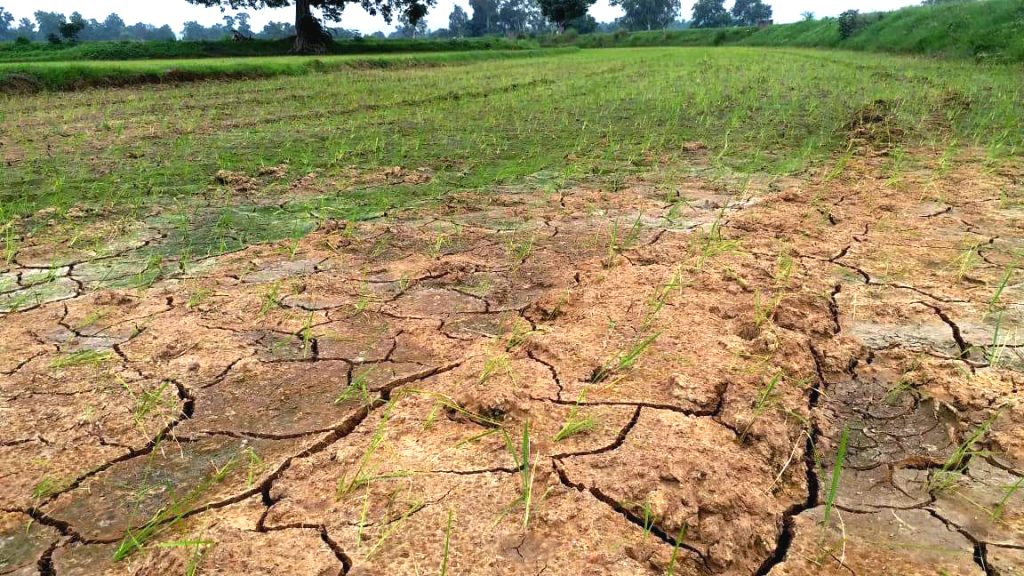Jajpur: Farmers in this district are staring at huge crop losses due to the lack of rain in the agricultural season, a report said. It said that the district has received 18 per cent less rainfall this season than what is required for agricultural activities.
In spite of the setback, farmers were hopeful that there will be sufficient rainfall in August. They had hoped it will compensate their earlier water loss. However, much to their despair, rainfall has not been sufficient in July also.
Till July 23, the amount of rainfall received is 67 per cent less than the district usually gets during the month. So the farmers are in distress as they stare at a bleak future.
According to reports, Jajpur district should have received 350.9mm rainfall in the month of July. The district got got only 116.78mm rainfall till Friday, informed officials. Farmers in Sukinda, Danagadi, Korei, Dharmasala and Rasulpur blocks are the worst off as there are no irrigation facilities in these places.
Notably, the Danagadi block which houses the Kalinganagar Industrial Complex has recorded only 73.50mm rainfall. Toxic materials produced by the industrial units have had a huge effect on weather and it has led to shortage of rainfall, locals opined.
Sources said the monsoon arrived in the district at the right time, but rainfall has been scanty since then. The district officials have set a target of paddy cultivation on 1,11,000 hectares this kharif season out of 1,43,645 hectares of farmland.
Farmers started cultivation after the monsoons arrived on schedule. However, rainfall scarcity and lack of water in the high-level canal has seriously affected cultivation work. The farmers in the non-irrigated areas are trying to plant the saplings but they have failed to make any headway due to lack of rainfall.
It is alleged that water and air pollution caused by the major industrial firms in Jajpur is responsible for the change in climate and low rate of rainfall. This has happened as the Odisha State Pollution Control Board (SPCB) is hand in glove with the violators and have has failed to act against them.
Moreover, mindless felling of trees in the mining region has also had an impact on the weather and contributed to climate change and irregular rainfall, some locals opined.
According to an estimate of the Agricultural department the district should receive 238.5mm rainfall in June, 350.9mm in July, 341.2mm in August and 238mm in September.
Then only will the farmers be able to properly cultivate paddy, officials said. Reports said that Jajpur block received 68mm rainfall, Binjharpur block 131.40mm, Dasarathpur block 64mm, Korei block 129mm, Danagadi block 73.50mm, Sukinda block 177.60mm, Rasulpur block 85.60, Dharmasala block 103mm, Barchana block 170mm and Bari block 134mm.
The district has a network rivers, creeks and canal but it lacks adequate facilities for irrigation of the farmlands. As a result, the canals, minor irrigation projects, bore-wells and wells that have been dug have failed to be of any use for cultivation.
PNN
